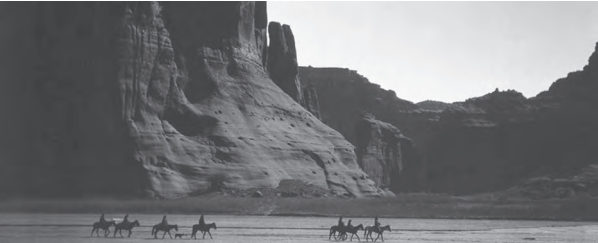Introduction
The history of the United States is a fascinating subject that can reveal many surprising facts about the past of American society and the country in general. As the country grew into the international power the United States is today, most of its history is well-known as it is represented by the media and is a part of general knowledge. However, some remarkable things that led the country to its success and economic independence are achieved due to the processes that happened at the end of the XIX century. Hence, for me, one of the “wow” moments of the module was learning about the Great West expansion that began after the American Civil War.
The History of the United States in the 1880-90s

In 1880, there was an increase in improved agricultural land in states like Dakota, California, and New Orleans. The presence of gold in California was also another reason why most Americans moved westwards hence the origin of the name Goldrush “a gold tush in 1858 drew approximately 100,000 white gold seekers” (Locke, & Wright, 2019, p. 34). It was a remarkable time that was characterized by the emergence of new words. For example, I have expanded my vocabulary with words and phrases like pay dirt, grubstake, and boom town – all referring to the gold rush. The primary sources such as The Miner’s Ten Commandments (1853) emphasize how linguistically unique and diverse goldminers’ jargon was: “Neither shalt thou destroy thyself by getting “tight,” nor “stewed,” nor “high,” nor “corned,” nor “half- seas over,” nor “three sheets in the wind,…” (Hutchings, 1853). The government focused on improving those lands to increase their productivity and attain food security in the end. Improving that land was also a way of creating more employment for the people of America. The impact was seen in the end since more industries came up and up to date the economy of the U.S.A is among the best in the world. Population in big cities such as Chicago, Philadelphia, and New York City increased rapidly. This is because the food was enough; hence, most people were in the position of feeding their families.
Conclusion
Finally, in the 1890s, new cities were born such as Denver, St. Paul, Omaha, Rochester, Indianapolis, etc. The reason behind this is that the government had enough surplus resources; hence it had to invest in the west lands since the eastern part of the country was already developed. Furthermore, the railroad networks were added to maximize the connectivity of one city to another so that an end the country could achieve economic stability. Moving west was advantageous to the country as a whole since it led to the growth of the U.S.A, which is currently ranked as the most developed country in the world.
Reference
Hutchings, J. M. (1853). The Miner’s Ten Commandments. Sun Print. San Francisco.
Locke, J. L., & Wright, B. (Eds.). (2019). The American Yawp: A Massively Collaborative Open US History Textbook, Vol. 1: To 1877. Stanford University Press.